Introduction
HealthPartners, a non-profit health care provider located in Minnesota, merged with Park Nicollet Health Services in 2013 (HealthPartners, 2014).
Points important to discuss:
- changes in goals and the mission;
- the role of leadership in the process;
- reasons to merge;
- the merger’s impact on the organization.
HealthPartners’s merger led to:
- integrating cultures;
- new approaches to the coordination of patient care;
- implementing new strategies in the process of care delivery.
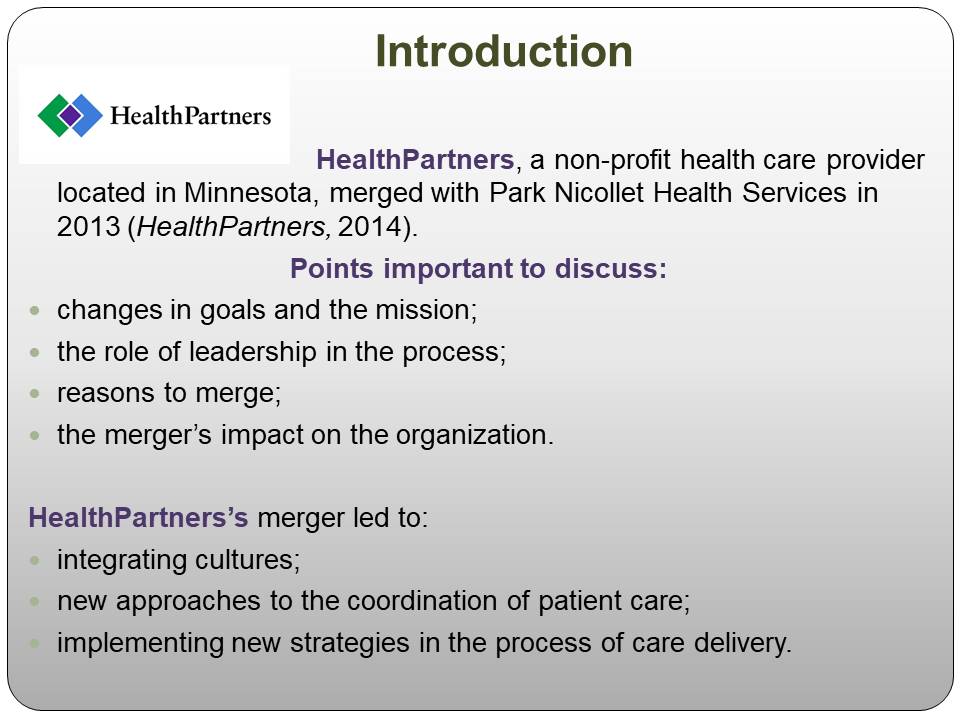
Organizational Overview: HealthPartners
HealthPartners’s Past and Current Mission
- Past Mission: “To provide high quality, efficient, and affordable care for patients” (HealthPartners, 2014).
- Current Mission: “To improve health and well-being in partnership with our members, patients and community (HealthPartners, 2014).
HealthPartners’s Past and Current Vision
- Past Vision: Excellence of diagnosis and treatment.
- Current Vision: “Health as it could be, affordability as it must be, through relationships built on trust” (HealthPartners, 2014).
The Organization’s Past Goals
- to improve the care for patients in the community;
- to improve the family support;
- to improve the patient care delivery;
- to make patients healthier;
- to make the health care in Bloomington affordable for the community members.
The Organization’s Current Goals
- to double the number of patients who can “achieve optimal health as measured by improved healthy lifestyle behaviors” (HealthPartners, 2014);
- to improve the quality of preventive services and chronic disease treatment;
- to “reduce socioeconomic and physical environmental barriers to better health” (HealthPartners, 2014).
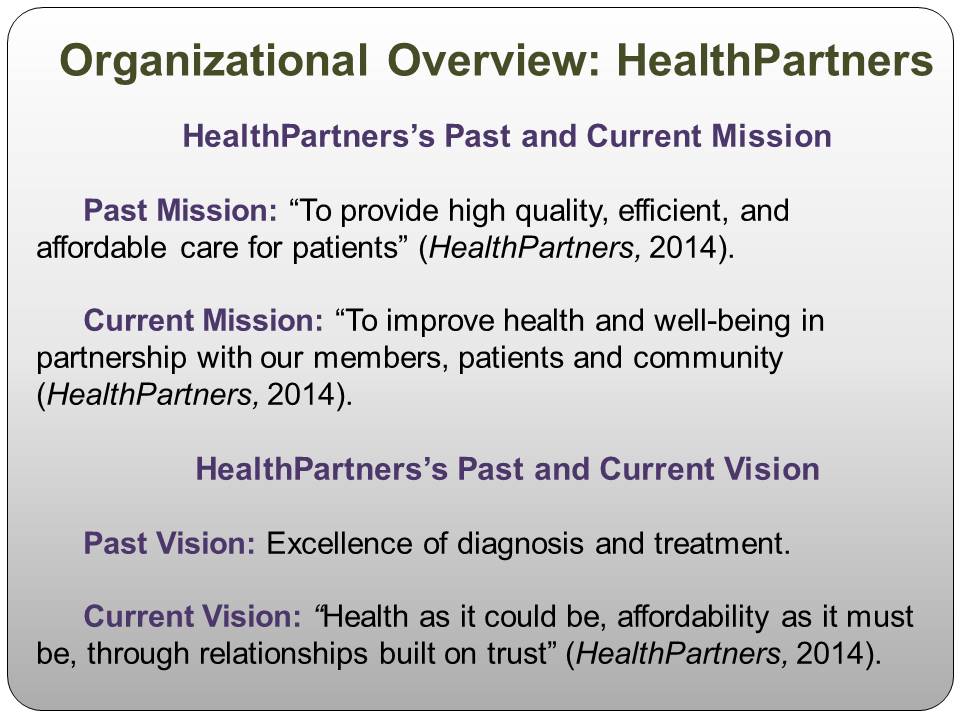
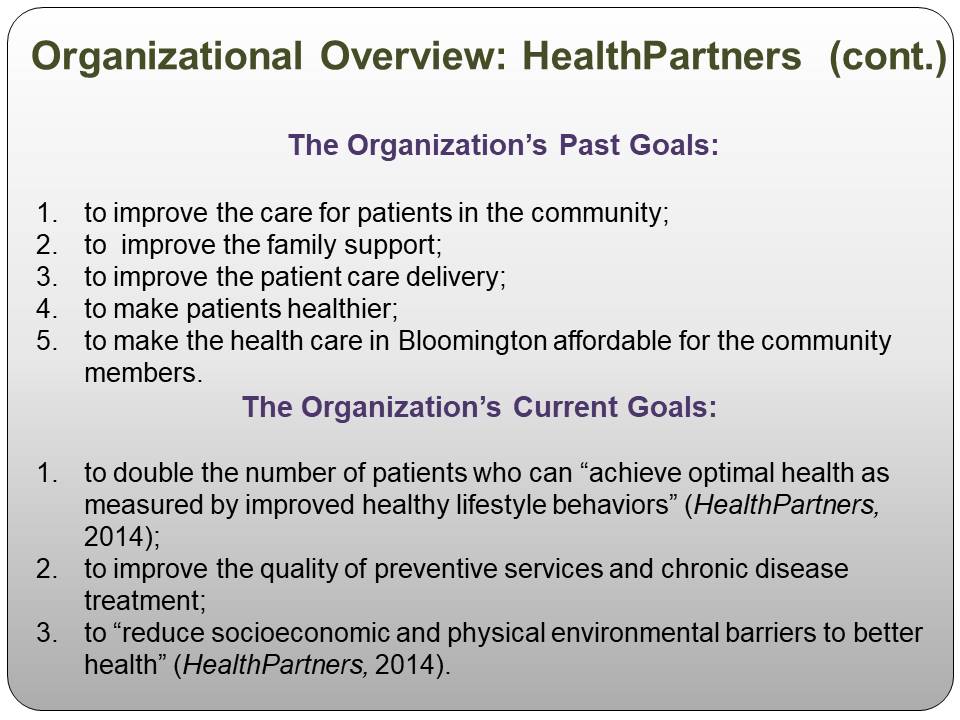
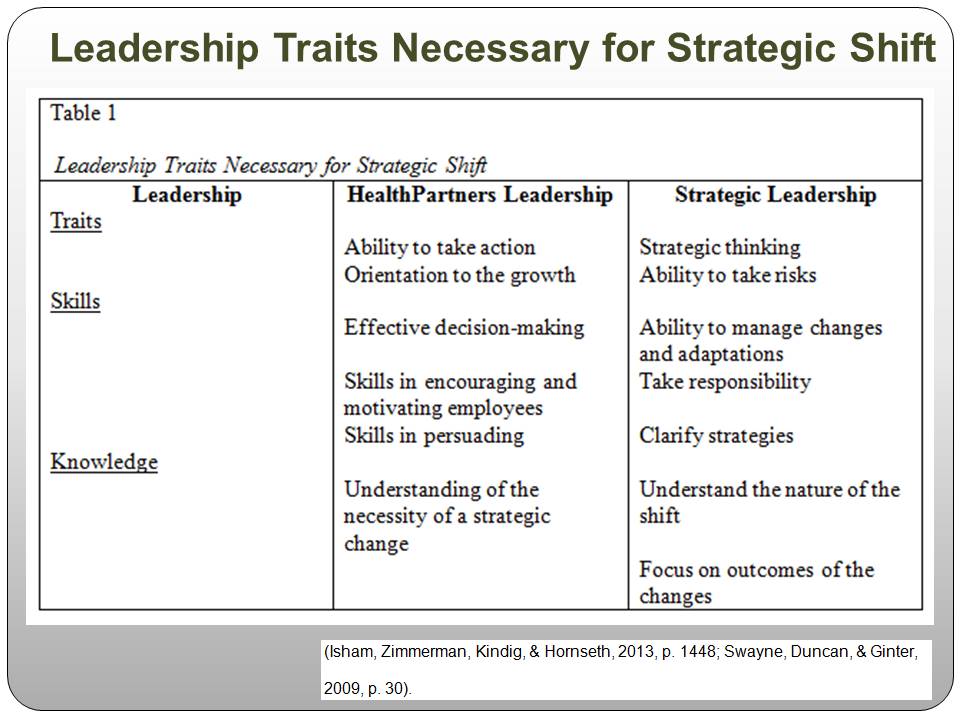
Rationale for the Strategic Shift
- Better experiences;
- More affordable care for community members;
- Becoming a leading healthcare organization in the community;
- Significant efficiency in services;
- Improvement of the technological base;
- Improvement of geographic distribution;
- Improvement of the overall care of provided services (Boffeli, Thongvanh, Evans, & Ahrens, 2012, p. 20).
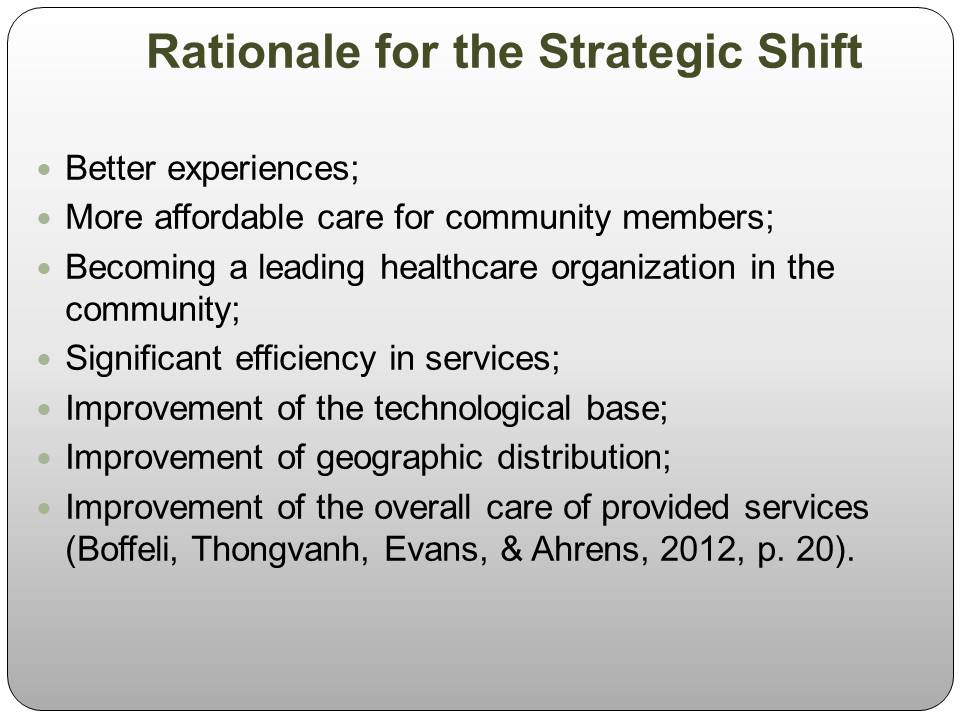
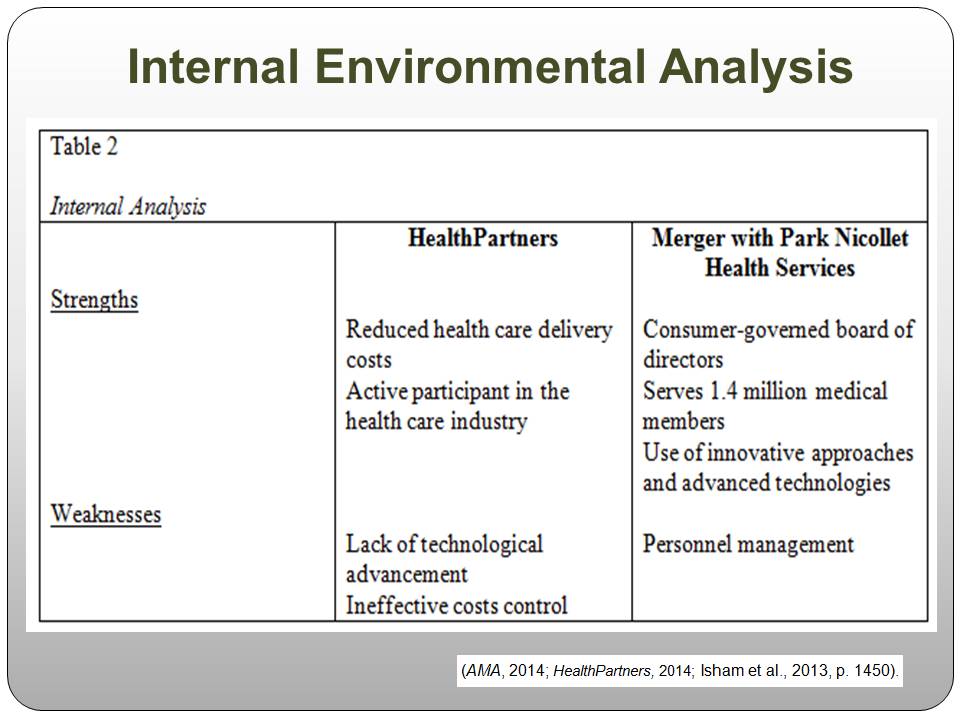
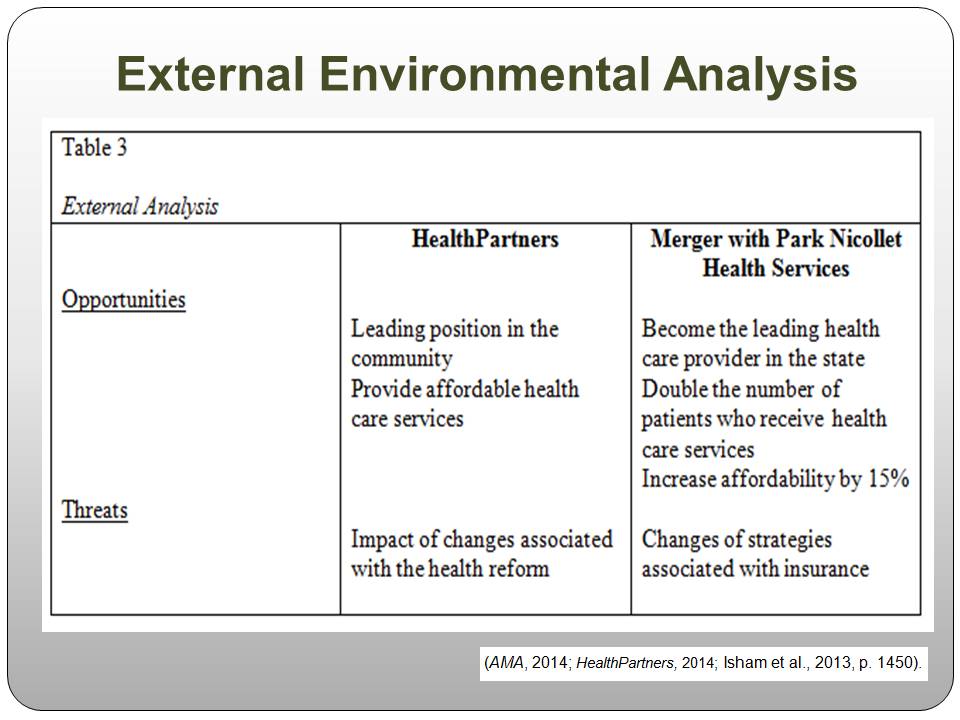
HealthPartners’s Strategic Shift: Merger
The merger: “two organizations combine through mutual agreement to form a single new organization” (Swayne et al., 2009, p. 221).
Features:
- the use of existing resources;
- expansion of the impact;
- the increase of the competitive advantage (Chreim, Williams, & Coller, 2012, p. 215; Zismer, 2013, p. 169).

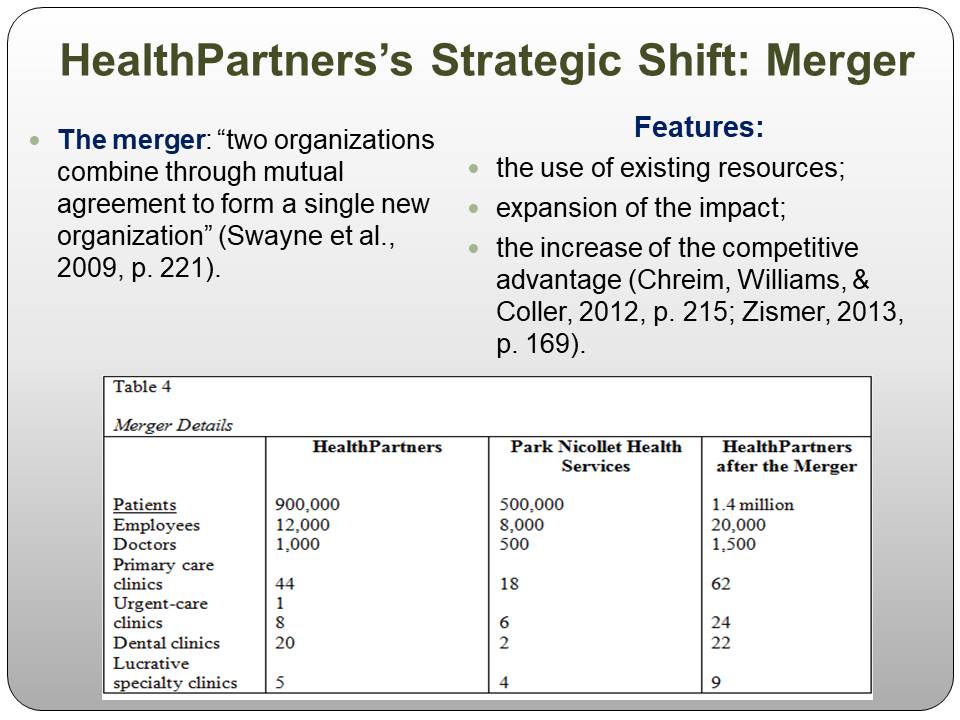
Impact of Strategic Shift
Impact on Governance and Structure
- the establishment of the centralized organization;
- uniting the clinics under the name of HealthPartners;
- centralized governance with the focus on the consumer-governed board of directors (Creasy & Kinard, 2013, p. 59).
Shifts in Strategies
- focus on patients in Minnesota and Wisconsin;
- policies to address the needs of the increased number of patients (AHRQ, 2014).
Integration of Cultures
- Similar cultural paths, ethical codes, and values.
Delivery and Character of Services
- No changes in the delivery;
- Improved access to general and special services.
Quality
- Improvement of the quality;
- Advanced technologies (HealthPartners, 2014).
Health Care Professionals’ Activities
- Focus on expanding the services (Zuckerman, 2011, p. 4).
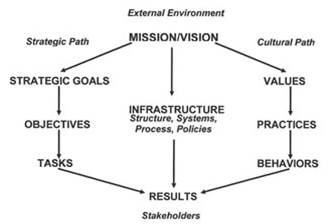
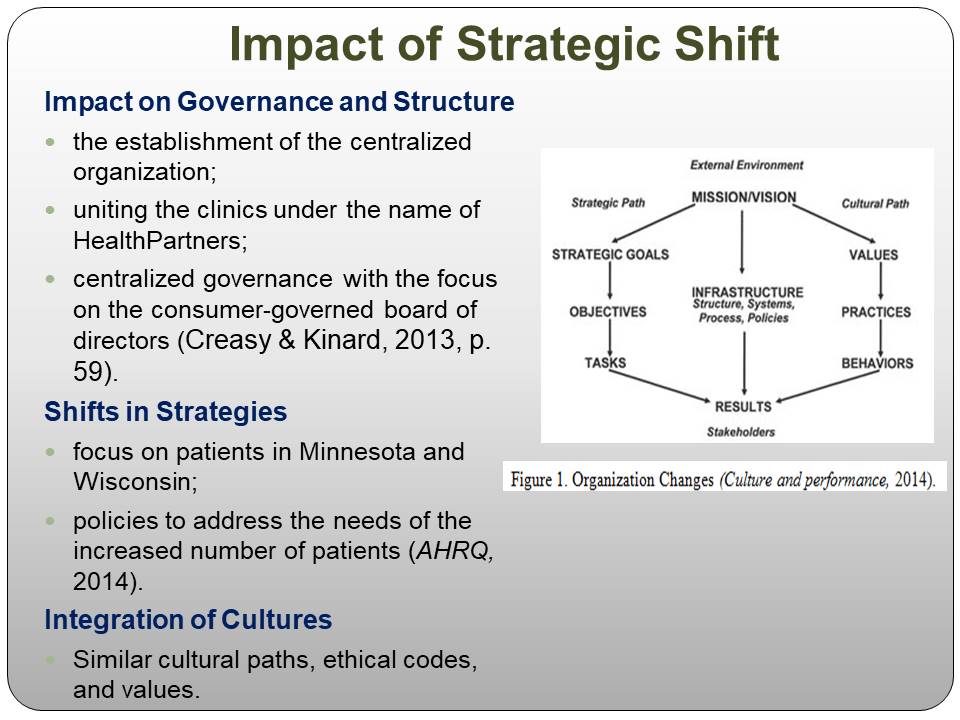
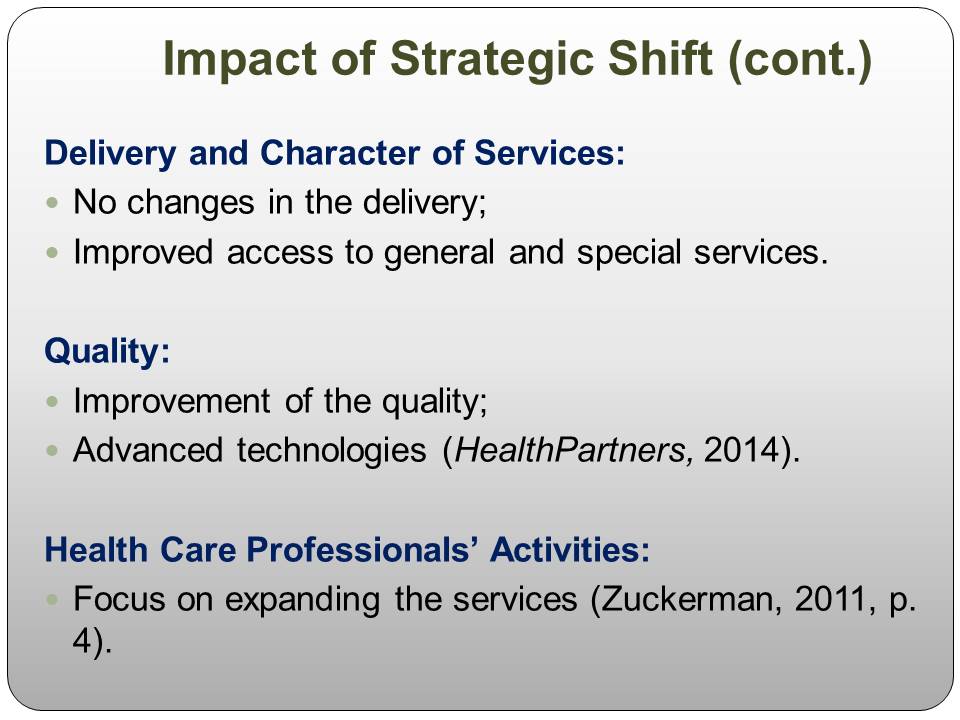
Conclusion
The analysis focused on
- the steps associated with the merger;
- shifts in the organization’s direction;
- changes in the number of public targeted and served by HealthPartners;
- changes in the number and character of performed tasks.
The organizations achieved the success while
- combining the similar cultures;
- formulating new mission and goals;
- proposing new strategies to organizing the work of health care professionals.
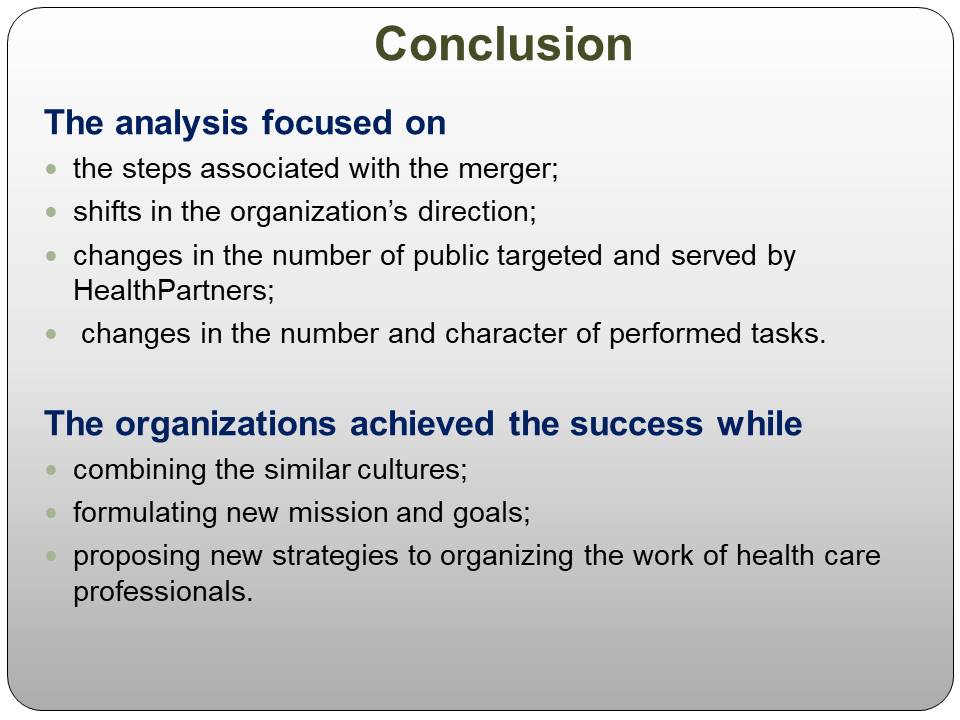
References
AHRQ: Agency for Healthcare Research and Quality’s. (2014). Web.
AMA: American Medical Association. (2014). Web.
Boffeli, T., Thongvanh, K., Evans, S., & Ahrens, C. (2012). Patient experience and physician productivity: debunking the mythical divide at HealthPartners clinics. The Permanente Journal, 16(4), 19-25.
Chreim, S., Williams, B., & Coller, K. (2012). Radical change in healthcare organization. Journal of Health Organization and Management, 26(2), 215-236.
Creasy, T., & Kinard, J. (2013). Health care mergers and acquisitions: Implications of robbers cave realistic conflict theory and prisoner’s dilemma game theory. Health Care Management, 32(1), 58-68.
Culture and performance. (2014). Web.
HealthPartners. (2014). Web.
Isham, G., Zimmerman, D., Kindig, D., & Hornseth, G. (2013). HealthPartners adopts community business model to deepen focus on nonclinical factors of health outcomes. Health Affairs, 32(8), 1446–1452.
Swayne, L. E., Duncan, W. J., & Ginter, P. M. (2009). Strategic management of health care organizations. Hoboken, NJ: John Wiley & Sons.
Zismer, D. (2013). How might a reforming U.S. healthcare marketplace threaten balance sheet liquidity for community health systems? Journal of Healthcare Management, 58(3), 168-172.
Zuckerman, A. (2011). Healthcare mergers and acquisitions: Strategies for consolidation. Frontiers of Health Services Management, 27(4), 3-12.